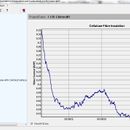Using WUFI to check wall moisture
I’m doing a number of highly insulated retrofit projects, and am concerned about long-term moisture in wall and ceiling cavities. I’ve had a brief intro to WUFI, the hygrothermic analysis tool, and am using v.5.1 (non-commercial) on my projects. But there are some inputs on the Surface Transfer Coefficient page that make a big difference in performance, but aren’t intuitive or explained. They are:
-Short-wave Radiation Absorptivity (should we use “no absorption” or try to use the closest value?)
-Adhering Fraction of Rain (using “According to inclination and construction type” makes a huge difference, but sometimes seems to give wrong results when used).
Also, a lot of our projects (especially exterior insulation w/furring strips) use an airspace behind the siding. If we model “Air space 20mm” vs. “Air space 20mm without additional moisture capacity”, it also makes a huge difference but isn’t explained.
Does anyone have experience with these? I’m hoping they are simple answers so I can know I’m getting the right results…and results that are in line with the building science guides I read, like this forum and Lstiburek’s Builder’s Guide. Thanks very much for any guidance you can provide.
Attached is a sample image of a results graph.
Tom Bassett-Dilley
GBA Detail Library
A collection of one thousand construction details organized by climate and house part










Replies
Tom,
The WUFI-wiki may be of some help...
http://www.wufi-wiki.com/mediawiki/index.php5/Details:ShortWave
http://www.wufi-wiki.com/mediawiki/index.php5/1D:Dialog_SurfaceTransferCoefficients
Mike, thanks, I had been on the WUFI-Wiki but had missed some of this. Getting there...
Maybe we can chat at the PH Conference if you'll be there in DC in a few weeks.